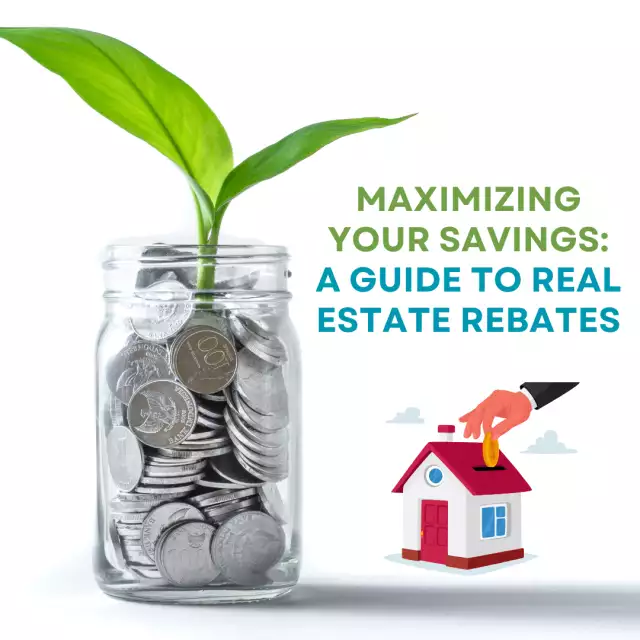Maximizing Your Savings: A Guide to Real Estate Rebates
Maximizing Your Savings: A Guide to Real Estate Rebates
Real estate is one of the biggest investments most people will ever make. As such, it’s important to make sure you’re getting the most out of your investment, including any opportunities for saving money. One way to do that is through a real estate rebate. In this guide, we’ll explore what a real estate rebate is, how it works, and how you can maximize your savings through this method.
What is a Real Estate Rebate?
A real estate rebateis a portion of the commission that a real estate agent receives for selling a property that is given back to the buyer. The amount of the rebate varies, but it can be as much as several thousand dollars, depending on the size of the property and the commission the agent receives.
How does a Real Estate Rebate work?
A real estate rebate works by having the buyer sign an agreement with the real estate agent to receive a portion of the commissionearned by the agent on the sale of the property. This agreement must be signed before the agent begins working with the buyer, and it is usually only available when the agent is representing the buyer and not the seller.
The amount of the rebate is negotiated between the buyer and the agent, and it is typically a percentage of the commission earned by the agent. For example, if the agent earns a commission of 6% on a $500,000 property, the commission would be $30,000. If the agreed-upon rebate is 2%, the buyer would receive $6,000 back from the agent.
How to Maximize Your Savings with a Real Estate Rebate
Now that we’ve covered the basics of a real estate rebate, let’s look at how you can maximize your savings through this method. Here are some tips to help you get the most out of a real estate rebate:
Choose the Right Agent
When looking for an agent to work with, it’s important to find one who is willing to offer a real estate rebate. Not all agents do, so it’s important to ask before you start working with them. You also want to choose an agent who has experience working with buyers and who has a track record of successfully negotiating rebates.
Negotiate the Rebate
The amount of the rebate is negotiable, so it’s important to try to get the best deal possible. Don’t be afraid to ask for a higher percentage, especially if you’re buying a more expensive property. Just be sure that you’re not asking for an amount that’s unreasonable, as this could turn off the agent and result in no rebate at all.
Use the Rebate for Closing Costs
One of the best ways to maximize your savings with a real estate rebate is to use it for closing costs. Closing costs can add up quickly and can be a significant expense for buyers, so using the rebate to cover these costs can be a huge help. Be sure to check with your lender to ensure that using a rebate for closing costs is allowed.
Use the Rebate for Home Improvements
Another way to maximize your savings is to use the rebate for home improvements. Buying a home is just the first step – there are often many improvements that need to be made to get the home exactly the way you want it. Using the rebate to fund these improvements can save you a lot of money in the long run.
Invest the Rebate
Finally, consider investing the rebate in a long-term investment, such as a retirement account or a mutual fund. This can help the rebate grow over time and provide you with even more savings in the future.
Examples of Real Estate Rebates
To help you better understand how a real estate rebate works and how it can benefit you, here are a few examples:
Example 1:
Buyer A purchases a $500,000 home:
Buyer A signs an agreement with their real estate agent for a 2% rebate. The agent earns a commission of 3% on the sale, or $15,000. The rebate to Buyer A is $7,500, which can be used for closing costs, home improvements, or investment in a long-term investment.
Example 2:
Buyer B purchases a $1 million home:
Buyer B signs an agreement with their real estate agent for a 2% rebate. The agent earns a commission of 4% on the sale, or $40,000. The rebate to Buyer B is $20,000, which can be used for closing costs, home improvements, or invest in a long-term investment.
Example 3:
Buyer C purchases a $300,000 home:
Buyer C signs an agreement with their real estate agent for a 1.5% rebate. The agent earns a commission of 3% on the sale, or $9,000. The rebate to Buyer C is $4,500, which can be used for closing costs, home improvements, or investment in a long-term investment.
As you can see from these examples, the amount of the rebate can vary depending on the size of the property and the commission earned by the agent. However, even a small rebate can be helpful in maximizing your savings and reducing the overall cost of buying a home.
In conclusion, a real estate rebate can be an effective way to maximize your savings when buying a home. By negotiating the rebate, choosing the right agent, and using the rebate wisely, you can save thousands of dollars on your home purchase. When looking for a home and a real estate agent, don't forget to consider the potential savings that a real estate rebate can offer.



